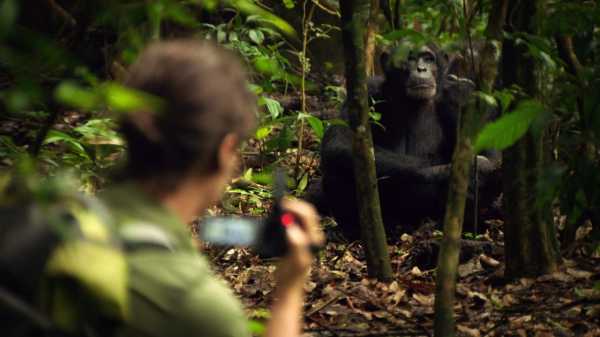
Tinkering with format in its forty-fifth season, PBS’s “Nova” now presents “Nova Wonders,” and its six episodes represent a successful attempt at updating an operating system. The young show is something of a youth show. Though its somewhat digressive format is built to engage an adult who desires a survey course to revitalize his scientific literacy, the hosts tend to address the camera with the amazement-encouraging inflection of a museum docent entertaining an eighth-grade STEM-enrichment class.
The presenters are Talithia Williams, a mathematician; Rana el Kaliouby, a computer scientist; and André Fenton, a neuroscientist. They handle hosting duties, in relay fashion, from an empty space resembling the bare floor of an office tower. Nothing but structural columns and sun-filled windows distracts from their presentations, which range from the squeak analysis of bat biologists (the first episode is titled “What Are Animals Saying?”) to the dark-matter detecting of particle physicists (“What’s the Universe Made Of?”). The unadorned building is a citadel of reason. It especially seemed so on Wednesday night, if the viewer was toggling between an episode called “What’s Living in You?” and Rudy Giuliani’s performance on “Hannity.” The “Nova Wonders” survey tour of the parasites and bacteria inhabiting your person was significantly less gross than the other stuff.
This was true even when a researcher, stationed at the California Academy of Sciences, began waylaying museumgoers in hopes of harvesting arachnids from their not-yet-horrified faces, for the sake of developing her database. Face mites, we learned, have a two-week life cycle, grow to as long as a tenth of a millimetre in length, and inhabit your cheeks at this very moment, no matter how invigorating your exfoliator. “Supposedly,” the research scientist said, “they come out of your pores at night and the males and females have sex on your face and go back down to lay the eggs.” A fellow who’d been hosting a particularly sizable mite photographed its enlarged image with his phone, as if preparing an envy-inspiring Instagram post.
Notably, the hosts of “Nova Wonders” are not television personalities, per se, but simply personable experts presenting a show. Television, when turning to popular science, has tended to encourage a hokeyness from its screen talents. There was an abrupt shift of tone, last night, when “Nova Wonders” made way for a replay of just plain “Nova,” where the host, David Pogue, ventured in “Search of the Superbattery.” His journey began with a direct address of electrochemical cells: “When you die, a piece of us dies as well. Face it, battery, you have issues.” Then, when his flashlight failed, Pogue took a mock fall down his basement steps.
The master of the form—of eliciting the sort of affection extended to hammy high-school chemistry teachers—is Bill Nye, whose “Bill Nye Saves the World” returns to Netflix next week for a third season. Nye’s talents include mechanical engineering, sketch comedy, and heroic self-caricature, and his show reconciles the format of the variety hour with the aims of a lab session. When “Nova Wonders” explored the microbiome, el Kallouby gestured toward a computer rendering of an E. coli bacterium and warmly offered that “like a lot of bacteria, it looks like a tiny, hairy hot dog.” Last season, addressing the same topic, Nye featured a computing rendering of a gonorrhea bacterium that looked like a tiny, spiky peanut. Also, he featured a YouTube star singing a number titled “Good Bacteria,” a standup comedian bearing germs on her hands, and a couple of affable academics in lab coats. Nye’s core constituency—the members of the studio audience affecting his trademark bow tie, the college kids gazing starstruck at an erstwhile kids-show icon—appreciates him for combining the soothing presence of Fred Rogers with the rigor of a pop Galileo. His prominence as a voice on the subject of climate change encourages fans to invest real hope in the notion that he might save the world, somewhat literally, by action and example. And, evidently, he is inspiring other popular-science shows to experiment with new tricks.
Sourse: newyorker.com






